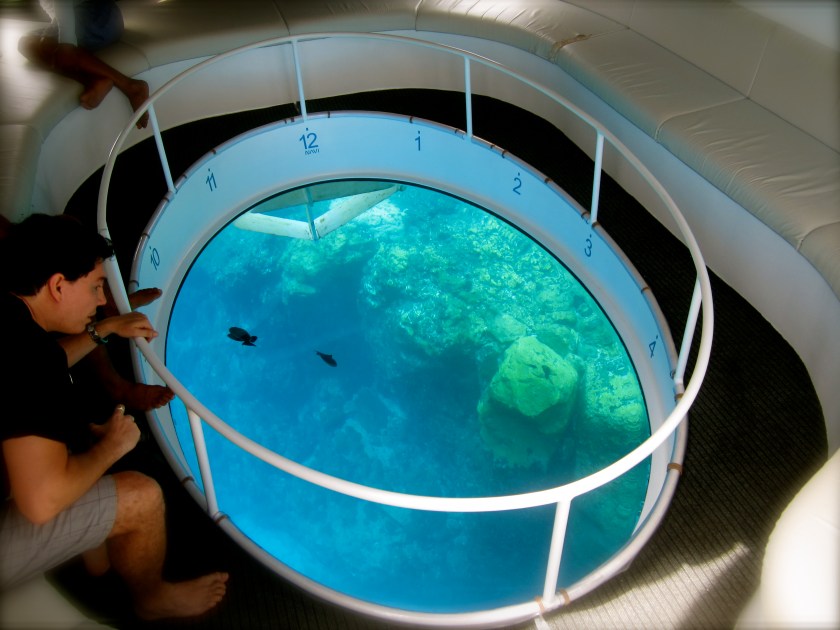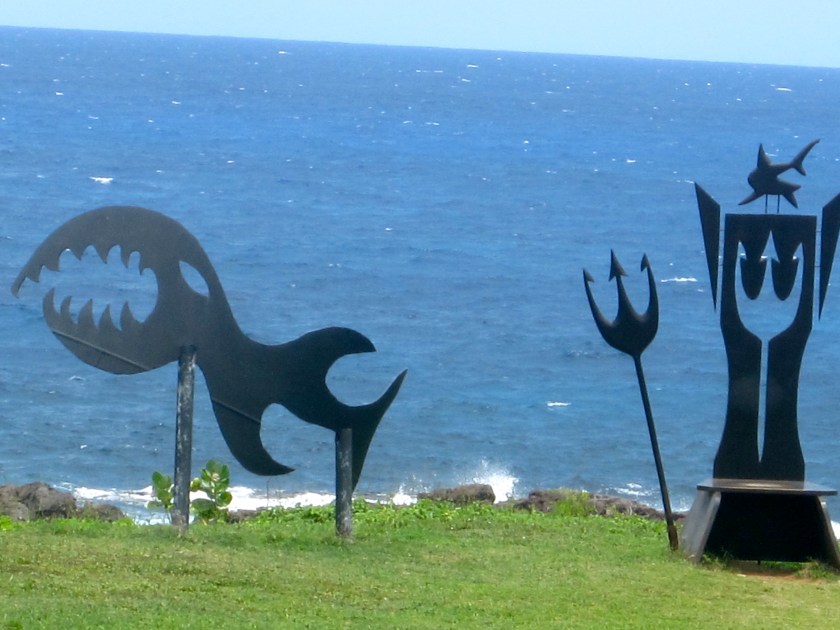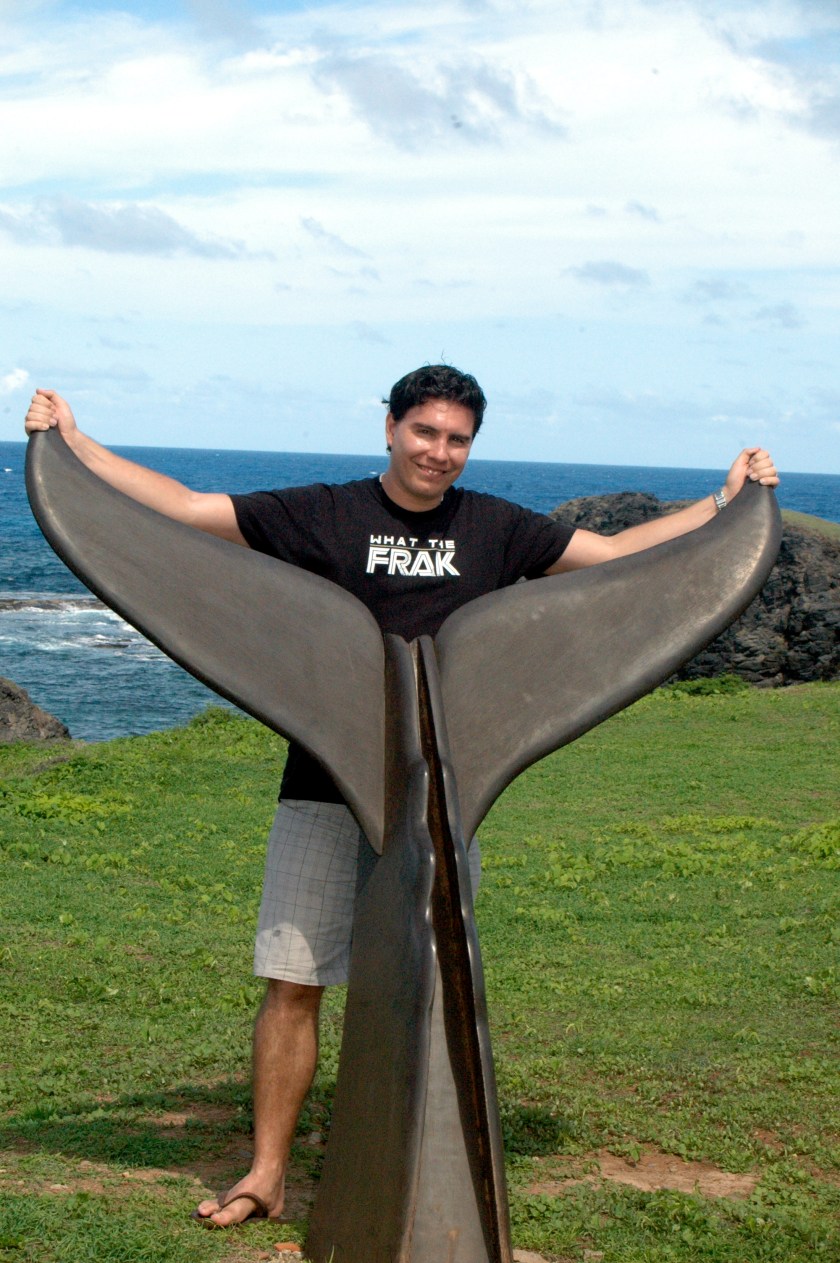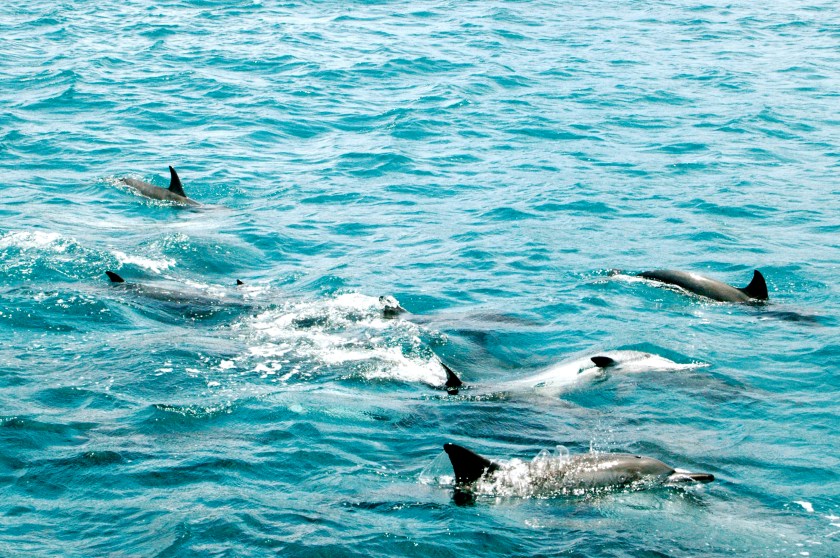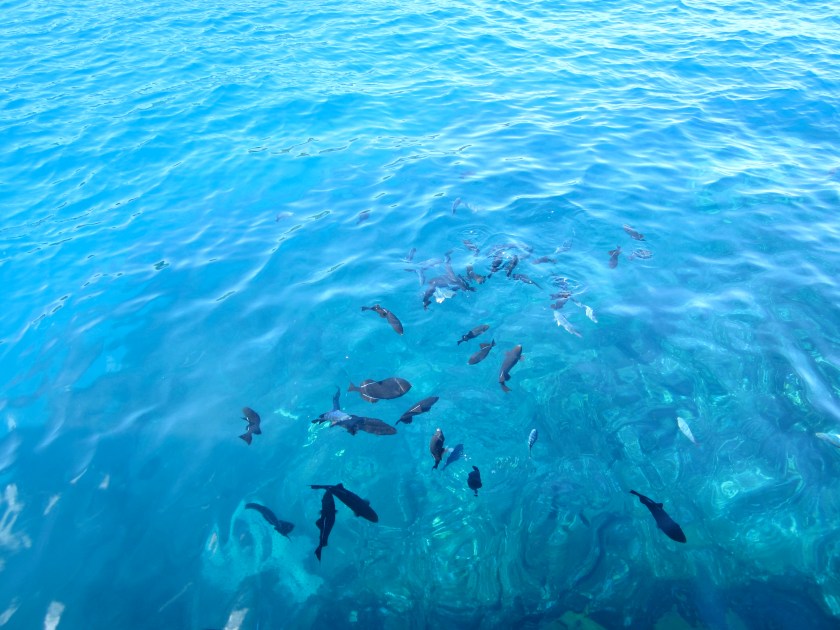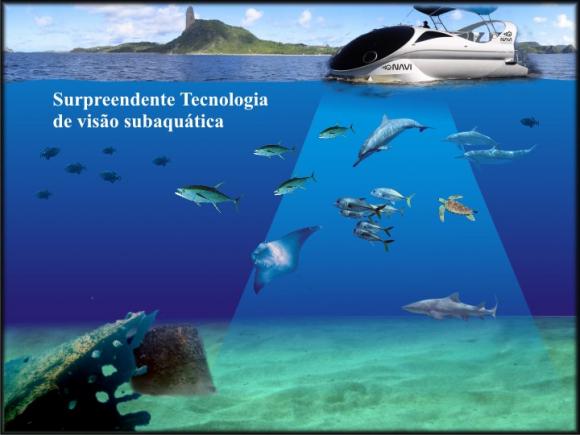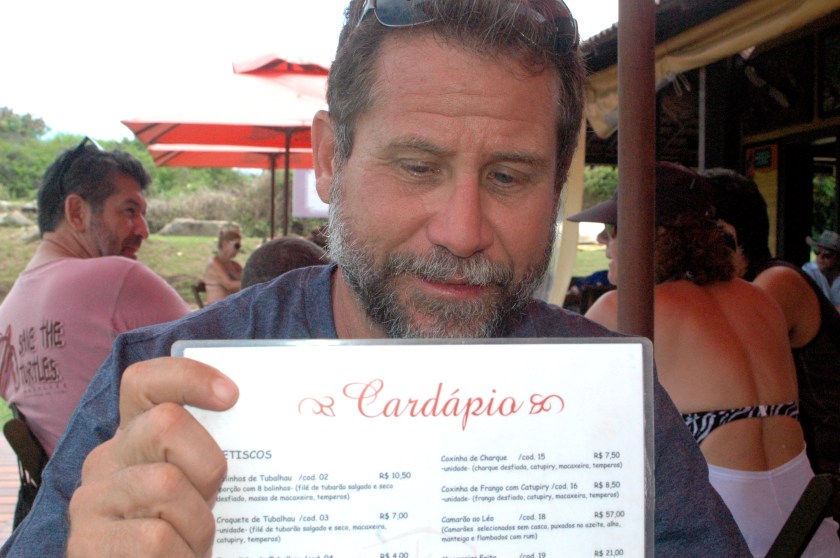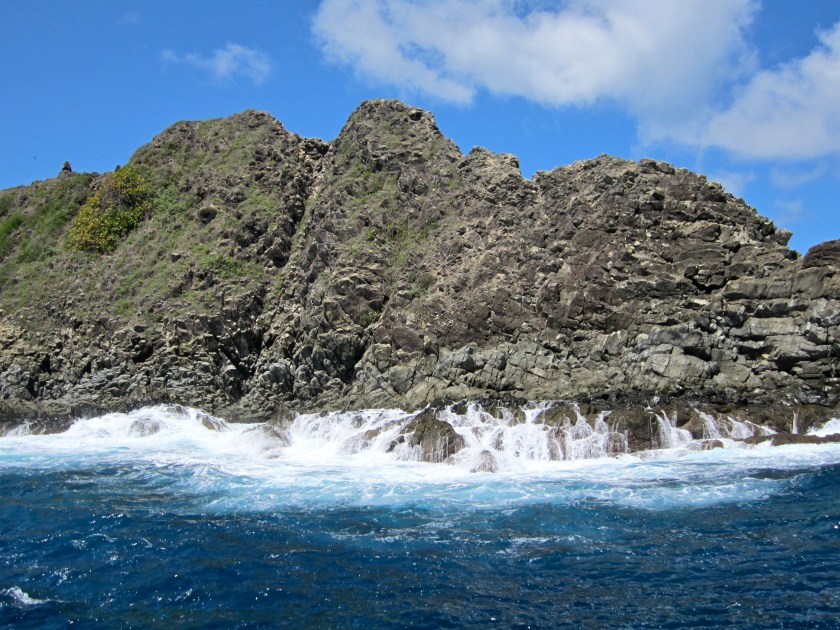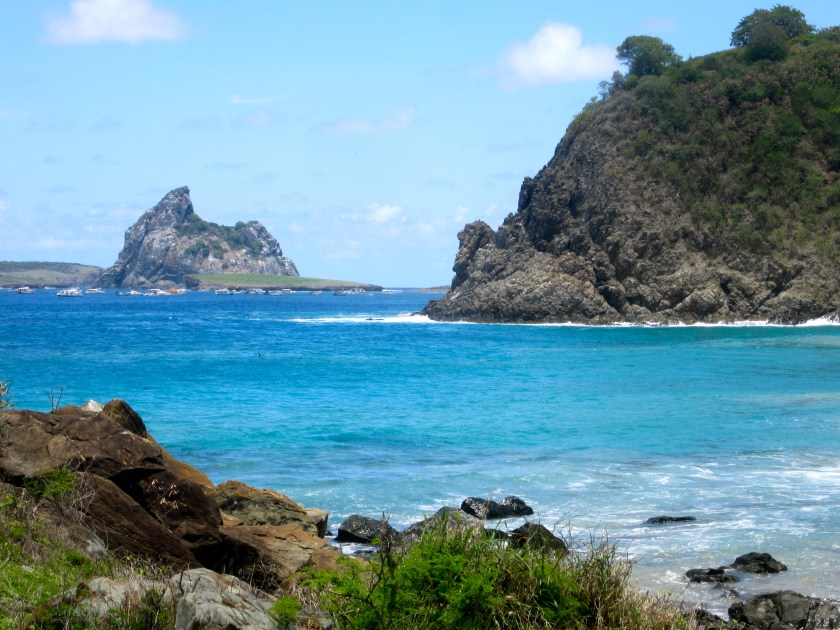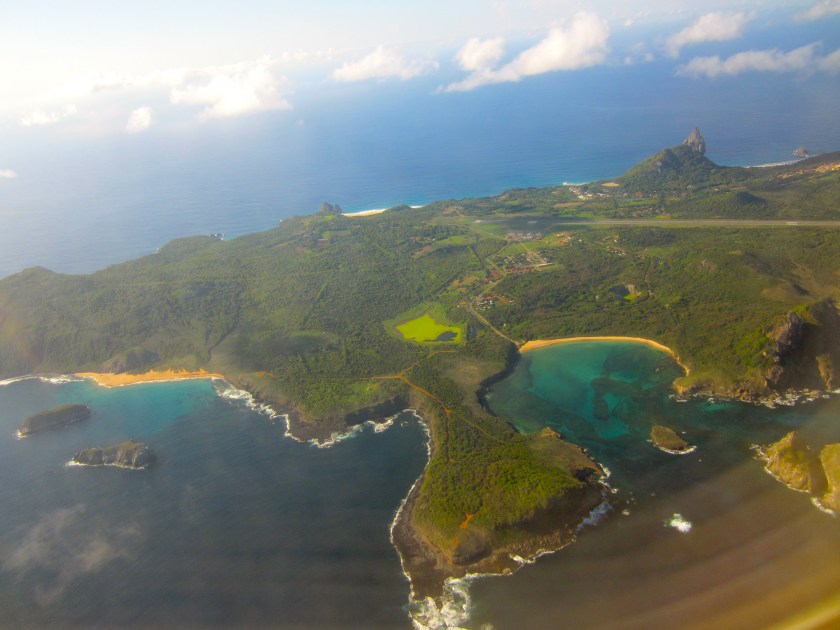http://www.thedepartureboard.com/picture-the-world-project-brazil
Category: ARCHIPELAGO
Travel Theme: Curves.
Ailsa, from “Where’s my Backpack?” asked this week’s question: “Are you ready to show off your curves?” Sometimes, the best way to see and ‘feel the curves’ while traveling, is not actually by road… what about by plane? Definitely, a different experience!
“Curving over’ the archipelago of Fernando de Noronha, South AmericaMy appreciation to Where’s my backpack? for the inspiration! 😮
Related articles
- Endless Curves (thoughtfulbeliever.wordpress.com)
- Travel challenge: Curves of sandstone (madoqua.wordpress.com)
Picture the World Project: Brazil!
Picture The World Project, BrazilPosted on July 3rd, 2012
Photo by 3rdCultureChildren
I am so honored to be nominated to offer a photo from my collection to represent Brazil. What to choose from? I went with nature – one of the most beautiful beaches my ´Brazilian eyes´ have ever seen! The picture chosen a unique orange-toned sunset, overlooking the warm waters of the Atlantic Ocean…
It’s my duty to nominate two people to submit photos of another country. I would like to nominate Heather (of thewanderingdrays.blogspot.com.br) who has moved with her family to Egypt. I would also like to nominate Carla (of carlarunstheworld.com) currently in the Philippines, and getting ready for their next move in January 2014, to Rio de Janeiro, Brazil!
Thank you 3rdculturechildren for this beautiful photo for Brazil. Looking forward to seing Heather and Carla’s contributions.
Related articles
- Saying ‘Goodbye Brazil’ in style! (3rdculturechildren.com)
- Picture the World Project: Representing Brazil! (3rdculturechildren.com)
Sustainable energy in Brazil: Wind Power Park in the Northeast.
 Today I decided to have fun writing, revisiting my long-lost past in research and natural sciences, as well as, a result of the ongoing inspiration (or should I call it “daily challenges”? :o) my current Physical Science students offer… The topic I chose to revisit, showcases one of the family’s trips to Natal, Rio Grande do Norte, while husband went to visit the Wind Power Park.
Today I decided to have fun writing, revisiting my long-lost past in research and natural sciences, as well as, a result of the ongoing inspiration (or should I call it “daily challenges”? :o) my current Physical Science students offer… The topic I chose to revisit, showcases one of the family’s trips to Natal, Rio Grande do Norte, while husband went to visit the Wind Power Park.
A little bit of background: A few years back, a drought in Brazil that cut water to the country’s hydroelectric plants, prompted severe energy shortages. The crisis underscored Brazil’s pressing need to diversify away from water power.
Brazil’s first wind-energy turbine was installed in Fernando de Noronha Archipelago, in 1992. Later, the government created programs to encourage the use of other renewable sources, such as wind power, biomass, and Small Hydroelectric Power Stations (PCHs). Such stations use hydropower, the flagship of Brazil’s energy matrix, which comprises around three-quarters of Brazil’s installed energy capacity.
High energy production costs, coupled with the advantages of wind power as a renewable, widely available energy source, have led several countries to establish regulatory incentives and direct financial investments to stimulate wind power generation. Brazil held its first wind-only energy auction in 2009, in a move to diversify its energy portfolio.
The Brazilian Wind Energy Association and the government have set a goal of achieving 10 gigawatts of wind energy capacity by 2020. Let’s just hope. Renewable resources: the greener and cleaner, the better!


O Parque eólico Alegria é um complexo de propriedade da Multiner, localizado no munícipio de Guamaré, no Rio Grande do Norte (RN). O complexo refere-se aos parques Alegria I e Alegria II.
Related articles
- Fernando de Noronha Marine National Park: wildlife (3rdculturechildren.com)
- World Heritage Wonder: Fernando de Noronha Archipelago, Brazil (3rdculturechildren.com)
16 meters deep: Investigating marine life without getting wet! Projeto Navi in Fernando de Noronha.

It’s finally here: the last post on our trip/expedition to the Fernando de Noronha Archipelago.
The husband, an avid and passionate amateur photographer. His wife, yours truly, always being reminded of her background as a Biologist and forever researcher… The perfect combination for venturing with Eng. Leonardo Veras through a private investigation trip along the open ocean waters in Fernando de Noronha.
Eng. Leo Veras takes responsibility for the Navi Project (Projeto Navi), a pioneer experiment at the archipelago – unique, and wonderful!
We were taken to observe the marine life, 16 meters deep, thanks to the ship’s glass bottom, resistant to pressure, high volume and speed. Talk about biology, math, physics, all at once! Lovely and fantastic! We were able to snap several shots, as well as, a couple of videos during our expedition. All 3 images from the Project’s Website (above) are used with permission from the Project’s Coordinator. [We are very thankful to Mr Leonardo Veras for his attention, kindness and, obviously, for the private tour!] All other photographs, (including all the videos to come!) presented below, are part of our family’s personal collection (feel free to use or share them, just remembering to mention the original source!) 😮 Thanks for the interest! 
Fernando de Noronha has caught the imagination of travelers for centuries and many urban myths are associated with this gloriously surreal island. The archipelago is made up of one 11-square-mile chunk of volcanic rock and 20 smaller islands, three degrees south of the equator, 220 miles from Brazil’s north-eastern coast. Fernando de Noronha’s claim to fame is its diverse and rich ecosystem.
Snapshots from the Shark Museum, Fernando de Noronha Archipelago, Brazil

This post was promised a long time ago…It’s already been a month we came back from the archipelago, and finally, got through the last photos – the last two posts, a bit on the “scientific side”, but still, very enjoyable. Sharks and Marine investigation. Today, it’s all about the sharks. Backstory: Just like the Atlantis, Fernando de Noronha has caught the imagination of travelers for centuries and many urban myths are associated with this gloriously surreal island.
The archipelago is made up of one 11-square-mile chunk of volcanic rock and 20 smaller islands, three degrees south of the equator, 220 miles from Brazil’s north-eastern coast.
 In Atalaia Beach, we were able to snorkel with fishes and juvenile sharks, checking out the swarms of hawksbill and green turtles, and also, witness rare island species like iguanas. Other adventure seekers like us, engaged in underwater activities, diving and snorkeling to experience the prolific marine life including albacore, barracuda, snappers, cangulos (fish)… Continuing with our experiences in Noronha, we reserved some time to visit and enjoy the company of Leonardo Veras, the curator for Fernando de Noronha’s Shark Museum (“Museu dos Tubarões”). Leo, as he prefers to be called, is a passionate engineer who lives and works at the main island, and was kind enough to take us on an unforgettable trip through the marine world! An upcoming post will share our adventures with Leo Veras and his Navi Project, investigating the deep open ocean waters. For now, you’ll be left with images we snapped while visiting the “Museu dos Tubarões” – current residence of Leo Veras, his own sculpture garden and his “front yard view”. Check them all out! 😮
In Atalaia Beach, we were able to snorkel with fishes and juvenile sharks, checking out the swarms of hawksbill and green turtles, and also, witness rare island species like iguanas. Other adventure seekers like us, engaged in underwater activities, diving and snorkeling to experience the prolific marine life including albacore, barracuda, snappers, cangulos (fish)… Continuing with our experiences in Noronha, we reserved some time to visit and enjoy the company of Leonardo Veras, the curator for Fernando de Noronha’s Shark Museum (“Museu dos Tubarões”). Leo, as he prefers to be called, is a passionate engineer who lives and works at the main island, and was kind enough to take us on an unforgettable trip through the marine world! An upcoming post will share our adventures with Leo Veras and his Navi Project, investigating the deep open ocean waters. For now, you’ll be left with images we snapped while visiting the “Museu dos Tubarões” – current residence of Leo Veras, his own sculpture garden and his “front yard view”. Check them all out! 😮

Fernando de Noronha’s claim to fame is its diverse and rich ecosystem. And while nature lovers throng to this eco-paradise, the volcanic island with its splendid marine life, dramatic rock formations and long lazy stretches of beaches is the perfect romantic destination as well… We’ll miss it!
333rd Post: Surrounded by marine dolphins [video]
Every year, people travel to Fernando de Noronha, a group of islands off the coast of Brazil, to meet some of the archipelago’s most famous residents: spinner dolphins:
The spinner dolphin is a tropical oceanic dolphin that lives in groups numbering three to more than two thousand individuals. Of the 37 different dolphin species, it is the third most abundant in the world and is named for its tendency to shoot out of the water and complete as many as seven rotations whilst airborne.
The dolphins usually surface during boat rides, showing off their acrobatics skills as they leap out of the water and putting on a real show. The stunts they perform are more than simply fun; they’re an important form of signalling, drawing the attention of the boat, which, in turn, protects the rest of the pod from potential predators. The communication system consists of different types of jumps and beats made with the body on the surface of the water, producing turbulence when the dolphin completes its dive.
The daily routine for the spinner dolphins in Fernando de Noronha involves feeding, primarily during the night, followed by a morning relocating to the appropriately named Dolphins Bay. They arrive in the bay at sunrise and depart for various feeding areas in the afternoon.Dolphins Bay (Baia dos Golfinhos), located off Sancho Beach, is a top destination for dolphin spotters. The bay’s waters are the calmest and deepest in the entire archipelago, ranging from 0 to 25 metres but averaging about 15 meters in the centre. The floor of the bay is composed predominantly of volcanic sands with scattered rocks and can be accessed by a single trail that offers a good vantage point from which to observe the activities of the spinner dolphins. One ideal point from which to observe Dolphins Bay is Dolphin Lookout, set 55 metres above sea level. It can be reached via a one-kilometre-long walking trail that begins in a parking lot at Sancho Bay.
Fernando de Noronha Marine National Park: wildlife
 Fernando de Noronha in Brazil is famous for its exquisite natural environment, pristine beaches, and tropical climate where the sun shines the whole year! A paradise for scuba diving in Brazil, there are numerous things to do on the Fernando Noronha island. The wildlife of Fernando de Noronha is very rich, and one of the main attractions of the island are the Spinner Dolphins which can be seeing 365 days a year from the Dolphins Bay Viewpoint or on a Noronha boat ride. We were fortunate to spot a few other “representatives” of the archipelago’s wildlife.
Fernando de Noronha in Brazil is famous for its exquisite natural environment, pristine beaches, and tropical climate where the sun shines the whole year! A paradise for scuba diving in Brazil, there are numerous things to do on the Fernando Noronha island. The wildlife of Fernando de Noronha is very rich, and one of the main attractions of the island are the Spinner Dolphins which can be seeing 365 days a year from the Dolphins Bay Viewpoint or on a Noronha boat ride. We were fortunate to spot a few other “representatives” of the archipelago’s wildlife.
Sunday is for food! Gastronomic event and islander cuisine.

 During our visit to the Archipelago of Fernando de Noronha, we were invited to enjoy the magnificent islander cuisine, through an unique gastronomic event. This event happens every Wednesday and Saturday evenings at one of the best bread and breakfast of Fernando de Noronha called “Pousada Zé Maria”. Father and son run the business, and the night event we attended was hosted and presented by Zé Maria’s son, Tuca Noronha. Our appreciation to the host, as well as to the pleasant evening among friendly companions…
During our visit to the Archipelago of Fernando de Noronha, we were invited to enjoy the magnificent islander cuisine, through an unique gastronomic event. This event happens every Wednesday and Saturday evenings at one of the best bread and breakfast of Fernando de Noronha called “Pousada Zé Maria”. Father and son run the business, and the night event we attended was hosted and presented by Zé Maria’s son, Tuca Noronha. Our appreciation to the host, as well as to the pleasant evening among friendly companions…
That said, the ecologically correct paradise of Fernando de Noronha offers opportunities for its visitors to be adventurous, without impacting the environment – and this concept is extended to its cuisine. Besides participating at Zé Maria’s Gastronomical Event, we also enjoyed typical food from the island at the Shark Museum Restaurant and Restaurante da Edilma (where I had shark for the first time!), and the perfect evening view at Pousada Maravilha‘s restaurant. The union of great food, good conversations and pleasant ambience, is the perfect combination for wonderful travel memories…
Gastronomic Event at Zé Maria’s:
Sea Food Specialty at Maravilha Restaurant:
A special dish at the Shark Museum, in honor of its creator, Eng. Leonardo Veras: “Camarão ao Léo”:

[Português/English] Marine Turtles in Northeastern Brazil – Projeto TAMAR em Fernando de Noronha

 Five of the world’s seven sea turtle species are found in Brazil.
Five of the world’s seven sea turtle species are found in Brazil.
For over 20 years TAMAR project is responsible for identifying and protecting nesting beaches and feeding areas, doing research, promoting awareness and involving the local community.
Thanks to good planning, loyal sponsorship and an innovative merchandising program they are able to maintain 20 bases in Brazil. Releasing more than 600 thousand hatchlings every year, the TAMAR bases have become important tourism attractions and mean income to 1200 families.
Year started: 1982
Other Partners/Supporters: Petrobrás
Address: Alameda do Boldro s/no. – Fernando de Noronha – PE
Contact: Claudio Bellini
e-mail: infonoronha@tamar.org.br
more info: www.projetotamar.org.br
 Area: Natural
Area: NaturalActivities: Visit a conservation unit
Equipments: sandals, shorts, t-shirts, swimming gear, towel, small backpack, sunglasses, sunscreen
Gateway: Recife ou Natal
Near airport: Fernando de Noronha – PE
Dist. from the airport: 2 KM
Min. number visitors: 2
Max. Lenght: 10 day(s)
Min. Lenght: 2 day(s)
Level: easy
Activity: Enviromental, Scientific, Social
Best time to go: February, March, April, May
 [Portuguese] O arquipélago de Fernando de Noronha, composto por 21 ilhas e ilhotas de origem vulcânica, está situado a 345km de Natal, capital do Rio Grande do Norte/RN e a 545Km de Recife, capital de Pernambuco/PE. É sítio de reprodução da tartaruga-verde (Chelonia mydas), que utiliza as praias arenosas do lugar para desovar entre os meses de dezembro e julho. É também área de alimentação, crescimento e repouso para juvenis desta espécie e da tartaruga-de-pente (Eretmochelys imbricata).
[Portuguese] O arquipélago de Fernando de Noronha, composto por 21 ilhas e ilhotas de origem vulcânica, está situado a 345km de Natal, capital do Rio Grande do Norte/RN e a 545Km de Recife, capital de Pernambuco/PE. É sítio de reprodução da tartaruga-verde (Chelonia mydas), que utiliza as praias arenosas do lugar para desovar entre os meses de dezembro e julho. É também área de alimentação, crescimento e repouso para juvenis desta espécie e da tartaruga-de-pente (Eretmochelys imbricata).
As praias de desova apresentam características propícias a um monitoramento diário, inclusive noturno nas áreas principais. A do Leão concentra 80% das ocorrências. As demais desovas acontecem ao longo do mar de dentro, entre as praias do Sancho e da Conceição. Cada estação reprodutiva, registra em média 100 desovas, gerando 8.900 filhotes da tartaruga verde.
 O TAMAR iniciou suas atividades na região em 1984, quando o arquipélago ainda era território federal administrado pela Aeronáutica (hoje é território do Estado de Pernambuco).
O TAMAR iniciou suas atividades na região em 1984, quando o arquipélago ainda era território federal administrado pela Aeronáutica (hoje é território do Estado de Pernambuco).
Em 1986, foi criada a APA-Área de Proteção Ambiental. A praia do Leão, principal área de desova do arquipélago, tornou-se o embrião do Parque Nacional Marinho, criado por decreto federal, em 1988.
Fernando de Noronha é uma das bases mais importantes para o trabalho do Tamar.
É um verdadeiro laboratório natural, pois a transparência do mar oferece excelente condição ao desenvolvimento de pesquisas sobre a biologia e comportamento das tartarugas marinhas em ambiente natural, sobretudo debaixo d’água.
Além do monitoramento de fêmeas, durante o período reprodutivo, a base mantém um programa de marcação e recaptura de tartarugas que utilizam o arquipélago como área de alimentação, crescimento e repouso, durante uma etapa do seu ciclo de vida. Desde 1990, mais de mil tartarugas já foram marcadas pelo Tamar através desse programa, em que os pesquisadores realizam mergulho livre, autônomo ou rebocado.
 Além do mais, o grande fluxo turístico que o arquipélago registra é estratégico para o trabalho de sensibilização e educação ambiental, principalmente através do Centro de Visitantes-Museu Aberto das Tartarugas Marinhas, o qual tivemos o prazer e honra de visitar durante nossa recente visita ao arquipélago. Todos os visitantes do Museu-Aberto do TAMAR recebem uma palestra gratuita sobre a vida selvagem a ser encontrada no arquipélago, assim como, são instruídos a como se comportar em frente à natureza, sem causar quaisquer impacto ambiental. Todas as palestras são às 9 da noite, e seguem por cerca de uma hora até uma hora e meia. Extremamente informativas,claras, concisas e ministradas por pesquisadores e voluntários do TAMAR. É a perfeita preparação para os que irão aventurar-se a explorar as ilhas na manhã seguinte. Nós adoramos a experiência, eu enquanto bióloga, e meu esposo, agora apaixonado pela vida marinha. Um sucesso e uma oportunidade única de vivenciar, aprender e compartilhar conhecimentos.
Além do mais, o grande fluxo turístico que o arquipélago registra é estratégico para o trabalho de sensibilização e educação ambiental, principalmente através do Centro de Visitantes-Museu Aberto das Tartarugas Marinhas, o qual tivemos o prazer e honra de visitar durante nossa recente visita ao arquipélago. Todos os visitantes do Museu-Aberto do TAMAR recebem uma palestra gratuita sobre a vida selvagem a ser encontrada no arquipélago, assim como, são instruídos a como se comportar em frente à natureza, sem causar quaisquer impacto ambiental. Todas as palestras são às 9 da noite, e seguem por cerca de uma hora até uma hora e meia. Extremamente informativas,claras, concisas e ministradas por pesquisadores e voluntários do TAMAR. É a perfeita preparação para os que irão aventurar-se a explorar as ilhas na manhã seguinte. Nós adoramos a experiência, eu enquanto bióloga, e meu esposo, agora apaixonado pela vida marinha. Um sucesso e uma oportunidade única de vivenciar, aprender e compartilhar conhecimentos.
Weekly Photo Challenge: Contrast
The inspiration for this week’s challenge is “Contrast”, and here I’m, sharing a very recent image that represents a lot of contrast: the end of the day, beginning of the evening; the dark colors from the previously light sky, kindly kissing the calm ocean waters, introducing the night to observers and by-passers…

And, if you’re curious to know how this scene would look during the day, here’s another contrast: the ‘earth-colored sky’ is replaced by a paradisiac blue sky, which is reflected onto the turquoise and green waters…. from a far away view, I’m bringing you all to a closer look at the “Morro Dois Irmãos”(Two Brother’s Hill) 😮
So, do you prefer the “sunset view” or the “daytime view”? I’m totally bias, because I’m deeply in love with the main island, but I’m leaving the question here! 😮
Related Posts from other WordPress photographers: Contrast
World Heritage Wonder: Fernando de Noronha Archipelago, Brazil

Just like the Atlantis, Fernando de Noronha has caught the imagination of travelers for centuries and many urban myths are associated with this gloriously surreal island. With its powdery beaches, lush rolling greens and crystalline azure waters, Fernando de Noronha is a tropical paradise of sublime beauty that is steeped deep in mysticism and mystery. The archipelago – named after a 16th-century Portuguese nobleman who may never have actually set foot there – exists in the proud Brazilian imagination, as well as a beautiful group of a main island and several islets. Fernando de Noronha is, strictly speaking, an archipelago made up of one 11-square-mile chunk of volcanic rock and 20 smaller islands, three degrees south of the equator, 220 miles from Brazil’s north-eastern coast.

 Discovered in 16th century, the eco-wonderland is big on conservation, thus traveling from mainland is expensive business. Fernando de Noronha has the best beaches in Brazil, as Guia Quatro Rodas Praias, Brazil’s ‘Beach Bible’, bestowed five starts to only four beaches in Brazil – and three of them are at Fernando de Noronha. One of the more popular ways to explore the island-mountain is by hiring a dune buggy [look at our photos here on the sides!], which is available easily for rent.
Discovered in 16th century, the eco-wonderland is big on conservation, thus traveling from mainland is expensive business. Fernando de Noronha has the best beaches in Brazil, as Guia Quatro Rodas Praias, Brazil’s ‘Beach Bible’, bestowed five starts to only four beaches in Brazil – and three of them are at Fernando de Noronha. One of the more popular ways to explore the island-mountain is by hiring a dune buggy [look at our photos here on the sides!], which is available easily for rent.
We would always start or days early, heading towards Lago dos Dois Irmãos, or walking down the cobblestone streets in Vila dos Remédios.


In Atalaia Beach, we were able to snorkel with fishes and juvenile sharks, checking out the swarms of hawksbill and green turtles, and also, witness rare island species like iguanas. Other adventure seekers like us, engaged in underwater activities, diving and snorkeling to experience the prolific marine life including albacore, barracuda, snappers, cangulos (fish)… An upcoming post will offer more details about our encounters with the marine and wild lives from the archipelago 😮
Leão, Sancho and Porcos Bay are the best beaches in Fernando de Noronha and our personal favorite is Sancho Bay as the water changes color from crystal to turquoise to emerald and there is a huge reef wall around the beach making it popular among snorkelers. These will be subject of upcoming posts, since we’re still going through our pictures, often having to bring ourselves back to our present time…





Fernando de Noronha’s claim to fame is its diverse and rich ecosystem. And while nature lovers throng to this eco-paradise, the volcanic island with its splendid marine life, dramatic rock formations and long lazy stretches of beaches is the perfect romantic destination as well… and we can vouche for that! 😮

…finally, leaving you “curious for the posts to come“, a glimpse of what we found during our eco-friendly explorative adventures: 😮
[We still need to share our experiences with the Brazilian TAMAR Project (marine turtles) and with the Shark Museum (“Museu do Tubarão”)]. Imagine!!
Searching for paradise: Aerial views of Fernando de Noronha Archipelago, Brazil
 This is the first in a series of posts on our recent trip to the Brazilian Archipelago of Fernando de Noronha: leisure, research, adventure, photography.
This is the first in a series of posts on our recent trip to the Brazilian Archipelago of Fernando de Noronha: leisure, research, adventure, photography.
Peaks of the Southern Atlantic submarine ridge form the Fernando de Noronha Archipelago off the coast of Brazil, representing a large proportion of the island surface of the South Atlantic and the rich waters are extremely important for the breeding and feeding of tuna, shark, turtle and marine mammals. The islands are home to the largest concentration of tropical seabirds in the Western Atlantic. Baia de Golfinhos has an exceptional population of resident dolphin. The Fernando de Noronha archipelago covers the majority of the main island and includes the majority of smaller offshore islands and islets. The islands are part of a large submarine mountain system of volcanic origin, which rises from the ocean floor some 4,000 m in depth. The Fernando de Noronha volcano is estimated to be between 1.8 million and 12.3 million years old. The coastline is complex, with a number of high cliffs and sandy beaches. The north-west facing shores are relatively calm, whereas the south-east shores face the predominant currents and winds and are largely rocky shores with significant wave action.
Arriving… flying along the coastline
And here, a snapshot of “who’s got an unchallengeable view” of this paradise:
The highly productive coastal waters around islands are used by many fish species for spawning and as a refuge for juvenile fish. The shallow waters also provide habitat for benthnic organisms (such as coral, sponges and algae). Oceanic islands therefore play a key role in the reproduction and dispersal of marine organisms, providing a staging point for the colonization of other coastal areas and the surrounding ocean. There are less than 10 oceanic islands in the South Atlantic and the Fernando de Noronha Archipelago represents almost 50% of the islands in terms of surface area. As the site makes up such a large proportion of insular South Atlantic coastal area, it is an important repository for the maintenance of biodiversity for the entire South Atlantic basin.
Fernando de Noronha is also the only know location for Insular Atlantic Forest – a subtype of Atlantic Rainforest. To date over 400 species of vascular plants have recorded, including three endemics. The archipelago also contains the sole oceanic mangrove in the South Atlantic. [Source: UNESCO/CLT/WHC]





